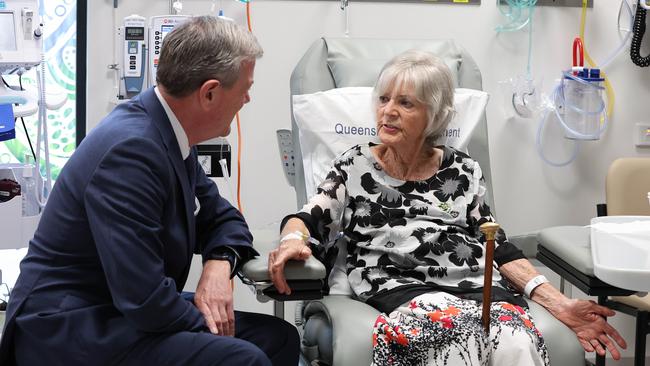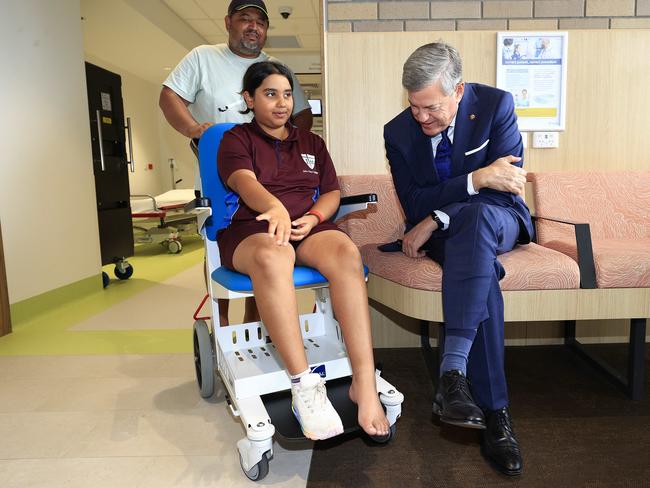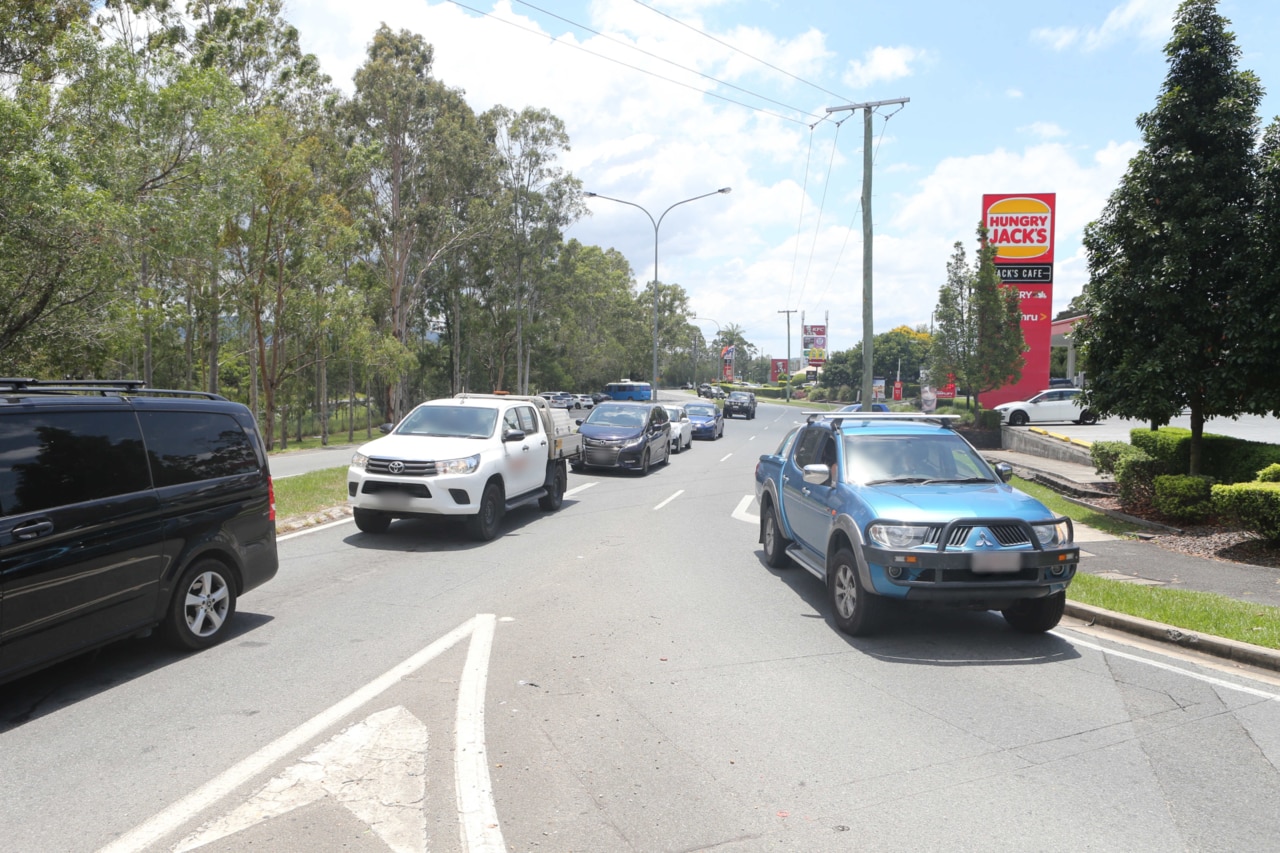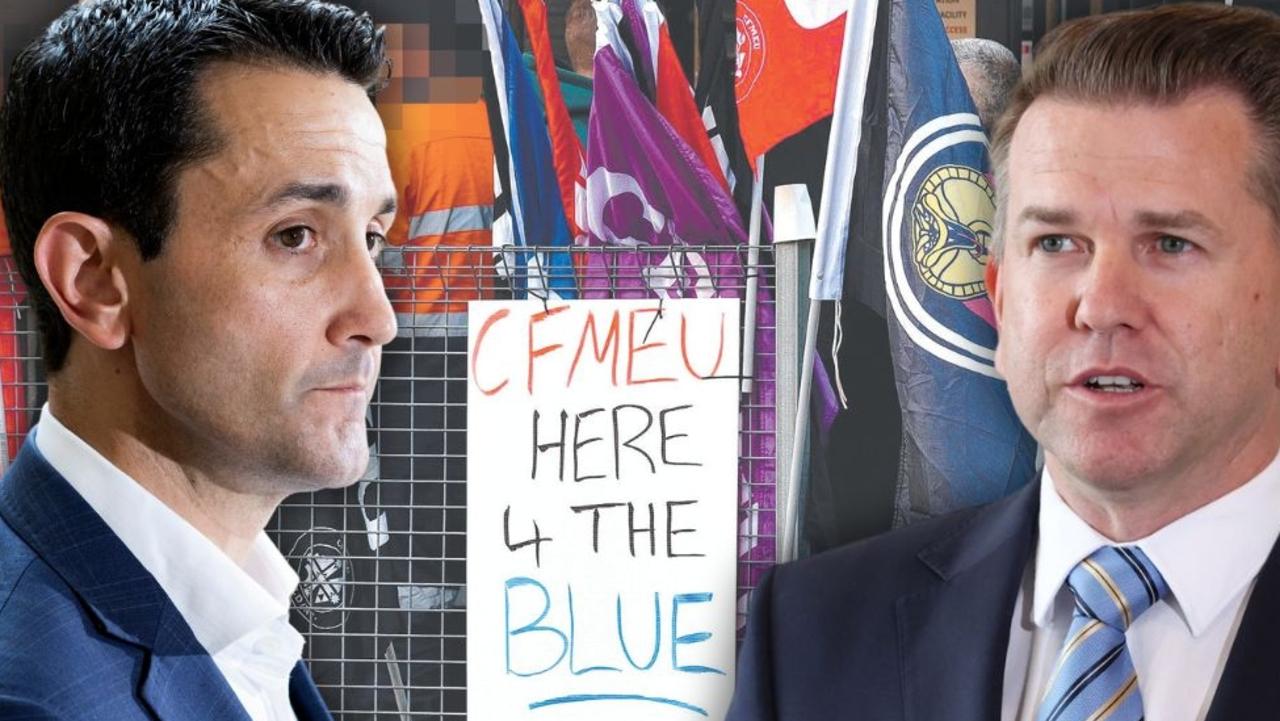Qld hospital wait lists: New website to show real-time data to help allocate patients
Queensland’s 25 largest hospitals will soon have a new weapon in the battle to manage overcrowding. HOW IT WILL WORK

QLD News
Don't miss out on the headlines from QLD News. Followed categories will be added to My News.
A website showing waiting lists, bed capacity and the number of emergency patients at Queensland’s 25 largest hospitals at any given time will be launched in February, the Health Minister has announced.
Clinicians working in emergency departments will be relied upon to manually enter patient admission data onto a shared system, which will be captured and uploaded on the public site every 30 minutes showing beds taken, patient numbers and waiting times.
Health Minister Tim Nicholls said the real-time data would better direct patient flow to hospitals, with the website to categorise patient numbers based on severity.
“Information will be updated as people come through the admission system, and we’ll know what’s going on there, because when people come in, of course, they’re trigged,” he said.
“For GPs who do often refer category three, four and five people (to hospital), they can have a look online as well.
“We’re able to move people through the system and give them the data to make those decisions.”
Total bed numbers and the number of patients in each room will be updated every morning as a baseline for capacity.
ED staff will be relied upon to keep data timely by uploading patient information as soon as physically possible during the triage process.
The AMAQ has praised the move, saying it would help improve patient flow and help hospitals identify surge periods.

Australian Medical Association of Queensland (AMAQ) president Dr Nick Yim said data uploading would be handled by administration staff, not frontline doctors and nurses.
“It can help streamline … hypothetically if there was an ambulance ramping situation at one hospital, they could theoretically can divert ambulance’s elsewhere,” he said.
“We can look at certain surge periods, especially in the future and use it to improve the workforce and retention.”
It comes after the government released the September quarter data for hospital performance, showing a decline in ambulance ramping.
The average response time for ambulances was 8.5 minutes, with 58.4 per cent of patients getting into an ED within the recommended time frame and 41.6 per cent of patients ramped for longer than 30 minutes.
Former health minister Shannon Fentiman had released tow or the three months prior to the election, showing ramping at 43.1 per cent.

A total of 99.9 per cent of all category one, or most urgent, patients were seen on time in an ED, but only 72.8 per cent of category 2 patients were seen on time and 67.3 per cent of category three patients.
Average wait time across all five categories of patients arriving to ED was 15 minutes.
The elective surgery waitlist grew to unprecedented levels, reaching 64,170 people compared to the previous record-high of 61,421 in June.
The government has vowed to “stabilise” the growing list.
“We are now in the process of diagnosing the problem, just finding out how bad the system is, and understanding exactly what the causes of those waitlists and that ambulance ramping are,” Mr Nicholls said.
Meanwhile, consultation for the renaming of Queensland’s seven satellite hospitals has begun, with Mr Nicholls asking health staff to submit their ideas and provide feedback by December 20.
The LNP in January promised to rename satellite hospitals if elected, after GPs and the AMAQ raised concerns that the inclusion of the word “hospital” was confusing and did not accurately reflect services offered.
“We were quite concerned,” AMAQ president Dr Yim said, adding that the title Minor Injury Clinic would be more appropriate.
The cost of changing the names of all seven clinics remains unknown, but it will be paid for through the existing Queensland Health budget.
Exact costs will depend on the “size” of the name change.

“And where it’s going to be, and all those types of things. But I think that’d be fairly modest costs. And I think we’re my I’m assured by my DG that we can manage those costs within the budget,” Mr Nicholls said.
Asked whether the changing of seven satellite hospital names would equate to a “few million,” Mr Nicholls replied, “I wouldn’t expect that”.
“I can say that we’ll be changing the names in relation to the satellite hospital name, but I think potentially that they will be very much around the location of where they are, and we know that they’re often accompanied by First Nations names,” he said.
Nine new CT scanners and six MRI machines will be delivered across the state – two of the CTs earmarked for Charleville and Ayr.
The locations of the remaining 13 machines are still being determined.
Mr Nicholls said the Eight Mile Plains Satellite Hospital was being considered, with available land an important factor in decisions.
Originally published as Qld hospital wait lists: New website to show real-time data to help allocate patients



